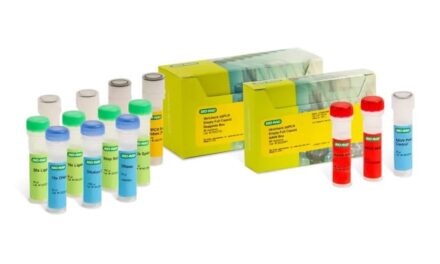Natera, San Carlos, Calif, a provider of noninvasive genetic testing and analysis of circulating cell-free DNA, has announced that the company’s Panorama noninvasive prenatal test (NIPT) is now validated to screen twin pregnancies for zygosity (identical or nonidentical/fraternal) and chromosomal abnormalities.
Natera’s Panorama is the first NIPT that can determine whether twins are monozygotic (identical) or dizygotic (nonidentical or fraternal) as early as 9 weeks’ gestation. In validation studies, Panorama identified monozygotic twins with >99% sensitivity and specificity.
Accurately assessing zygosity early in twin pregnancies is important. Monozygotic pregnancies can be at risk for complications that come from monochorionicity (a shared placenta). About 67% of monozygotic pregnancies are also monochorionic pregnancies, which are at the highest risk for intrauterine growth restriction, birth defects, and twin-twin transfusion syndrome—a complication of disproportionate blood supply resulting in high morbidity and mortality.1–6
Until now, expecting parents and their physicians have faced unanswered questions at the beginning of a twin pregnancy. Chorionicity can sometimes be difficult to determine, especially as a pregnancy approaches the second trimester. In fact, studies have shown that up to 19% of monochorionic pregnancies are incorrectly classified as dichorionic and may not be managed appropriately.4
“Panorama now fills a significant unmet need for expecting parents and physicians managing twin pregnancies,” says Matthew Rabinowitz, PhD, CEO and founder of Natera. “Enhancing Panorama to include screening for twin pregnancies is an important advancement that can determine zygosity at an early stage and help clinicians identify higher risk for conditions that affect more than 1 in 45 twin pregnancies. This new capability builds on the success of Panorama, the market-leading NIPT for common chromosomal conditions.”
Panorama builds on its history as the only NIPT that can tell the difference between the mother’s and the baby’s DNA, becoming the only NIPT that can now distinguish between each twin’s DNA. This unique technology enables Panorama to determine zygosity and the gender of each twin. It also helps identify risk for more genetic conditions in twin pregnancies than other NIPTs, including monosomy X, sex chromosome trisomies, and 22q11.2 deletion syndrome (for monozygotic twins only).
For more information, visit Natera.
REFERENCES
-
Society for Maternal-Fetal Medicine Publications Committee, Simpson LL. Twin-twin transfusion syndrome. Am J Obstet Gynecol. 2013;208(1):3–18; doi: 10.1016/j.ajog.2012.10.880.
-
Hayes EJ, et al. Multifetal gestations: twin, triplet, and higher-order multifetal pregnancies. Society for Maternal-Fetal Medicine, Committee on Practice Bulletins—Obstetrics, Practice Bulletin no. 169. Obstet Gynecol. 2016;128(4):e131–e146; doi: 10.1097/aog.0000000000001709.
-
Blumenfeld YJ, Momirova V, Rouse DJ, et al. Accuracy of sonographic chorionicity classification in twin gestations. J Ultrasound Med. 2014;33(12):2187–2192; doi: 10.7863/ultra.33.12.2187.
-
Oldenburg A, Rode L, Bødker B, et al. Influence of chorionicity on perinatal outcome in a large cohort of Danish twin pregnancies. Ultrasound Obstet Gynecol. 2012;39(1):69–74; doi: 10.1002/uog.10057.
-
Chasen ST, Chervenak FA. Twin pregnancy: prenatal issues [online]. UpToDate. Available at: www.uptodate.com/contents/twin-pregnancy-prenatal-issues. Accessed October 5, 2017.
-
Williams Obstetrics. 24th ed. Cunningham FG, Leveno KJ, Bloom SL, et al., eds. New York, NY: McGraw-Hill, 2014.






My question is do you have to know you are having twins or does this test automatically detect it. Every post I’ve seen the patient says their doctor has to check it’s a twin pregnancy on the order. So what I’m asking is, if you do not know you are having twins and your doctor selects single pregnancy will that test “find” the twin?